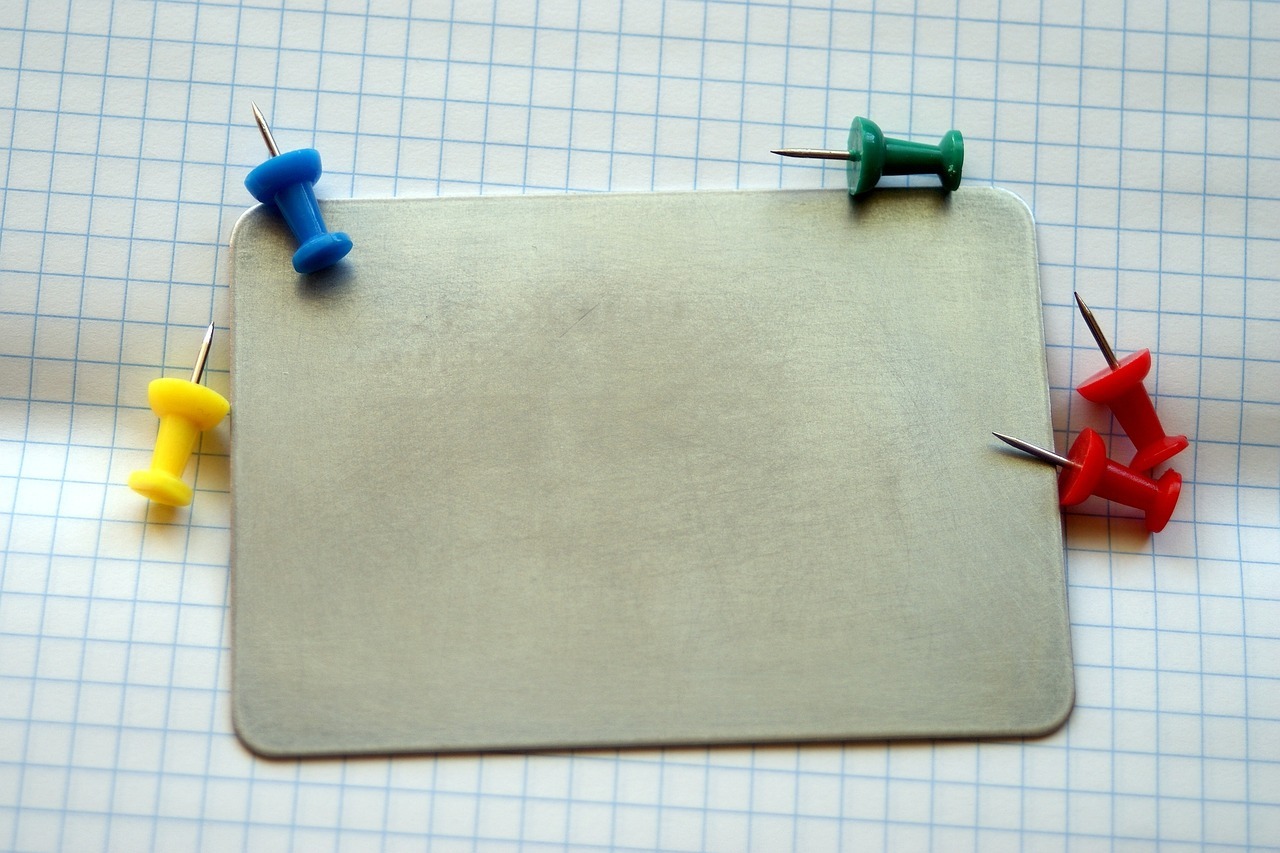You’ve put your heart and soul into building your brand, and now it’s time to give it a face – a logo that captures the essence of who you are and what you stand for. But where do you begin? How can you create a visual representation of your business that is not only eye-catching but also memorable enough to make an impact on your audience? Well, fear not, because Pegas Technology Solutions has got your back.
In this comprehensive guide, we will walk you through the essential steps to create a captivating logo for your website. From defining your brand identity and gathering inspiration to experimenting with various logo styles and getting feedback from others, we’ll provide invaluable insights and tips to ensure that the final outcome perfectly encapsulates the spirit of your venture. So buckle up, as we embark on this exciting journey towards creating a truly unforgettable emblem for your online presence!
Define Your Brand Identity
Before diving into logo design, it’s crucial to have a clear understanding of your brand identity and what message you want to convey. Your brand personality should be the basis for all identity elements, including your logo. Consider factors such as your target audience, company values, and unique selling points when defining your brand identity. Keep in mind that the more consistent you are with these aspects across all channels, the stronger and more memorable your brand will become.
To effectively communicate your brand personality through a memorable logo, start by analyzing those qualities that make your business unique. Are you bold and innovative or traditional and reliable? Do you offer luxury products or affordable solutions? Once you’ve identified these characteristics, use them as a foundation for designing a logo that accurately represents who you are as a company. This will not only help create an eye-catching visual but also ensure that it resonates with both existing customers and potential clients.
Research and Gather Inspiration
Diving into the world of research and gathering inspiration, let’s uncover the secrets to crafting an iconic symbol that’ll leave a lasting impression! Inspiration sources are all around you – from nature and architecture to art movements and cultural symbols. Look for patterns, shapes, colors, and themes that resonate with your brand identity. Pay attention to what’s currently trending in design; however, don’t be afraid to break the mold if it fits your unique vision. In addition, conducting a competitor analysis can provide valuable insight into what works well within your niche while also inspiring fresh ideas.
To perform a comprehensive competitor analysis, start by identifying key players in your industry who share similar values or target audiences. Examine their logos and branding elements closely – take note of color schemes, typography choices, imagery styles or any recurring themes. Are there any visual cues that seem to resonate within your market? Conversely, identify common pitfalls or overused tropes which could make your logo appear generic or forgettable amongst competitors. By carefully studying these examples and evaluating their effectiveness in communicating brand values, you’ll gain invaluable knowledge that will help you create a truly memorable logo for your website.
Choose the Right Typeface
Now that you’ve gathered inspiration, it’s time to pick the perfect typeface to express your brand’s personality and charm. Typography trends evolve over time, so it’s crucial to choose a font that not only represents your brand but also remains relevant in the ever-changing digital landscape. Font pairing is an essential aspect of creating a memorable logo, as the combination of different typefaces can evoke specific emotions and impressions.
To help you make an informed decision on which typefaces represent your brand best, here are some popular font categories and examples:
| Font Category | Examples |
|---|---|
| Serif | Times New Roman, Georgia, Garamond |
| Sans-serif | Helvetica, Arial, Futura |
| Script | Brush Script, Lobster, Allura |
| Display | Impact, Bebas Neue, Cooper Black |
Consider how each category might suit your brand identity – for instance: Serif fonts often convey tradition and authority; Sans-serif fonts tend to be modern and minimalistic; Script fonts give off elegance and creativity; while Display fonts are bold and attention-grabbing. Analyze these options carefully before settling on one or two complementary typefaces for your logo design. Don’t forget to experiment with various combinations until you find the perfect balance between aesthetics and readability that encapsulates the essence of Pegas Technology Solutions.
Select Your Color Palette
Consider the impact of color psychology when selecting your palette, as different hues evoke unique emotions and reactions from your audience. Maintaining brand consistency is crucial, so choose colors that complement and enhance your overall brand image. Don’t forget to prioritize accessibility by ensuring that your chosen colors are easily distinguishable for all users, including those with visual impairments or color blindness.
Color Psychology
Harness the power of color psychology to craft a logo that resonates with your audience and leaves a lasting impression! The colors you choose for your logo can evoke specific emotions and responses from viewers, making it essential to understand how different hues may be perceived. Color emotions play a significant role in branding, as they help communicate your brand’s personality, message, and values. Additionally, cultural associations with certain colors can influence how your logo is received by people from diverse backgrounds.
When selecting colors for your website’s logo, consider the psychological effects each shade may have on potential clients or customers. For example, red often represents passion and energy but can also signify danger or aggressiveness. Blue is associated with trustworthiness and stability but might be viewed as cold or unemotional in some contexts. Yellow conveys happiness and optimism yet can come across as overwhelming if overused. Green symbolizes growth and renewal while also being linked to environmentalism; however, it could suggest envy or jealousy in some situations. Be mindful of these color emotions when designing your logo to ensure it accurately reflects your brand’s identity – taking into account any cultural associations that may impact its interpretation by various audiences.
Brand Consistency
Maintaining brand consistency across all platforms is vital to building a strong identity that resonates with your audience and sets you apart from competitors. A memorable logo for your website not only contributes to this, but also ensures that your visual appeal stands out while retaining simplicity. When designing a logo that represents Pegas Technology Solutions, it’s essential to consider the core values and message of the brand while making sure it remains versatile enough to be used on various platforms.
To create an unforgettable logo for Pegas Technology Solutions, let’s further explore what makes a design stand out in terms of simplicity and visual appeal:
| Simplicity | Visual Appeal | Brand Consistency |
|---|---|---|
| Minimalistic design elements | Attention-grabbing color scheme | Logo aligns with overall branding |
| Easy-to-read typography | Unique iconography or imagery | Consistent use across all platforms |
| Avoiding overcrowding or clutter | Balancing negative space effectively | Adaptable for different formats |
By focusing on these aspects during the creative process, you’ll be able to craft a visually appealing yet simple logo that maintains brand consistency throughout. Make sure the final design exudes professionalism and resonates with your target audience, giving them a clear understanding of what Pegas Technology Solutions represents as an organization.
Accessibility
Now that we’ve discussed the importance of brand consistency, let’s delve into another crucial aspect of creating a memorable logo for your website – accessibility. In today’s world, it is essential to ensure that your web presence caters to all users, regardless of their abilities. This means incorporating web accessibility and inclusive design principles when developing your logo.
Web accessibility refers to the practice of making websites usable by people with disabilities, while inclusive design emphasizes designing products or services that can be used by as many people as possible. When creating a memorable logo for your website, consider how various users will perceive it. For instance, those with visual impairments might rely on screen readers to navigate your website. To accommodate this audience, make sure your logo has an appropriate alt text describing its appearance and purpose briefly. Additionally, pay attention to color contrast within your logo; this will help individuals with color vision deficiencies distinguish between different elements more easily. By considering these factors during the design process, you’ll create a truly accessible and unforgettable logo that resonates with a wider range of audiences.
Incorporate Symbols or Icons
Incorporating symbols or icons, huh? Let’s dive into how these little visual cues can truly make your brand stand out from the crowd. Symbols and icons have been used throughout human history as powerful tools to convey complex ideas and emotions quickly, so it’s no wonder that they can play a vital role in creating a memorable logo for your website. The key is to choose a symbol or icon with significance that resonates with your target audience and aligns with your brand identity. This way, you’ll be able to create an iconic representation of your brand that will stay etched in the minds of those who encounter it.
To incorporate symbols or icons effectively into your website’s logo design, take some time to delve into the world of symbolism and explore various options available. You might find inspiration in nature, art, mythology, or even everyday objects – just ensure that whatever you choose has meaning and relevance for both you and your potential customers. Once you’ve settled on an appropriate symbol or icon, work closely with a skilled designer who can help seamlessly integrate this element into your overall logo design without overshadowing other crucial aspects like typography and color scheme. Remember: balance is key when creating a visually appealing and memorable logo!
Experiment with Different Logo Styles
Dive into the realm of diverse logo styles and let your imagination run wild as you explore various design possibilities, ensuring that your brand’s visual identity truly stands out. By engaging in logo experimentation and style exploration, you open yourself up to a world of innovative designs that will make your website stand out from the competition. Don’t be afraid to push boundaries and play with different fonts, colors, shapes, and symbols to create a logo that resonates with your target audience.
To help guide you in this process of experimentation, consider exploring these popular logo styles:
| Minimalist | Vintage/Retro | Abstract |
|---|---|---|
| Simple | Nostalgic | Geometric Shapes |
| Clean Lines | Detailed | Unique Symbols |
| Limited Colors | Timeless Appeal | Conceptual |
Each style has its own unique characteristics; for instance, minimalist logos often use clean lines and limited color palettes to convey an elegant and modern feel. Vintage or retro logos evoke nostalgia through detailed illustrations or typography reminiscent of earlier eras. Abstract logos utilize geometric shapes or unique symbols to communicate an idea or concept without relying on words alone. As you experiment with different styles, analyze which ones best align with your brand’s personality and message while still being memorable for visitors to your website.
Test Your Logo in Different Contexts
It’s crucial to see how your logo performs in various contexts, ensuring it remains impactful and true to your brand across all platforms. Context versatility is vital, as your logo will not only appear on your website but also on social media profiles, marketing materials, and even merchandise. The adaptability importance of your logo cannot be overstated; you want a design that can seamlessly transition from a small favicon to a large banner without losing its essence or becoming unrecognizable.
To test your logo’s effectiveness in different scenarios, start by displaying it on both light and dark backgrounds. This will help you identify any readability issues that may arise due to contrasts or color combinations. Additionally, consider how the logo looks when resized – does it maintain its clarity when scaled down for mobile devices or up for billboards? Don’t forget to examine the legibility of any accompanying text within the logo design as well. Finally, gather feedback from others who are unfamiliar with your brand – this fresh perspective can offer valuable insights into whether your logo truly communicates what you want it to while remaining memorable and visually appealing.
Get Feedback and Revise
Don’t hesitate to seek opinions from your target audience, as their feedback is invaluable in creating a logo that resonates with them. Analyze the impact of your logo by gauging its effectiveness in conveying your brand’s message and evoking the desired emotions. Finally, make necessary adjustments based on the insights gathered, ensuring that your logo becomes a memorable representation of your website and Pegas Technology Solutions.
Seek Opinions from Target Audience
Gather insights from your target audience to ensure a lasting impression with your site’s emblem. Understanding audience preferences can significantly increase the chances of creating a logo that resonates and sticks in their memory. Conduct targeted outreach such as surveys, polls, or focus groups to gather valuable feedback on different logo designs and concepts. By involving your target audience in the design process, you create a sense of ownership and connection between them and your brand.
Don’t shy away from asking for detailed opinions about color schemes, typography, shapes, and any other design elements that make up your potential logos. The more specific the feedback is, the better you’ll understand what appeals to your audience and how it aligns with your brand identity. Remember that not every suggestion will be suitable or practical; however, combining various ideas and finding common themes among them can lead you towards designing a memorable logo for your website that truly reflects Pegas Technology Solutions’ essence.
Analyze the Impact of the Logo
Evaluating the impact of your site’s emblem is crucial for ensuring its effectiveness in resonating with your target audience and representing Pegas Technology Solutions’ identity. Analyzing the impact involves being up-to-date with logo trends and following basic design principles to create a lasting impression on viewers. Keep an eye on contemporaneous logo designs; you’ll want to be innovative while ensuring your logo remains relevant over time. Leverage simplicity, versatility, and memorability when creating your design to ensure it aligns with both current trends and timeless appeal.
Once you’ve designed a potential logo, it’s essential to test its impact on various platforms such as social media, print materials, and promotional items. Gauge reactions from different demographics within your target audience to determine if the message conveyed by the emblem resonates well. Analyze feedback related to color schemes, fonts used, imagery chosen, and overall emotional responses generated by the design. This process will help you fine-tune any elements that may not be optimally effective or require revisions before finalizing your website’s memorable Pegas Technology Solutions logo.
Make Necessary Adjustments
Once you’ve gathered feedback, it’s crucial to make any necessary adjustments to ensure the emblem truly represents Pegas Technology Solutions and resonates with your target audience. The importance of making these adjustments cannot be overstated, as a logo that isn’t flexible or adaptable can become outdated quickly or fail to connect with potential clients. Remember that your logo is often the first impression people have of your business, so take the time to refine it based on input from others – this will help create a more memorable and meaningful symbol.
Don’t be afraid to experiment with different colors, shapes, and fonts during this adjustment phase. Be open-minded and receptive to change while staying true to your brand identity. It’s essential to strike a balance between creativity and consistency in order for your logo design to effectively communicate what Pegas Technology Solutions stands for while also remaining memorable in the minds of consumers. Ultimately, taking the time now to make thoughtful adjustments will lead you towards creating an impactful visual representation of your website and brand that resonates with your target audience for years to come.
Frequently Asked Questions
How much should I expect to spend on a professional logo design for my website?
When it comes to logo budgeting for your website, the cost of a professional design can vary greatly depending on your specific needs and design investments. Typically, you can expect to spend anywhere from $100 to $1,000 or more for a high-quality logo. Factors that affect the price include the designer’s experience level, complexity of the design, and any additional elements such as custom illustrations or typography. It’s essential to analyze your business requirements and brand goals before setting a budget so you can ensure that you’re making a wise investment in your website’s visual identity.
How can I ensure that my logo remains relevant and timeless in the ever-evolving digital landscape?
To ensure your logo remains relevant and timeless in the ever-evolving digital landscape, focus on logo adaptability and color psychology when designing it. Choose a simple yet versatile design that can be easily adapted to various platforms, sizes, and contexts without losing its essence or recognition. Additionally, harness the power of color psychology by selecting colors that evoke the desired emotions and associations with your brand. By combining an adaptable design with thoughtful color choices, you’ll create a logo that not only stands out but also transcends trends and time.
What are some common mistakes to avoid when designing a logo for a website?
When designing a logo for your website, it’s crucial to avoid common mistakes that can negatively impact its effectiveness. Steer clear of cliches and overused design elements, as they can make your logo feel generic and unoriginal. Instead, strive for a versatile design that works well in various sizes and contexts—think about how the logo will appear on different devices and platforms. By paying attention to these details and approaching the process with creativity and analytical thinking, you’ll be better equipped to craft a unique logo that resonates with your audience and stands the test of time.
How do I protect my logo from being copied or used without my permission?
To safeguard your logo from unauthorized use or duplication, implement various logo protection strategies and stay vigilant about copyright enforcement. Start by registering your logo with the U.S. Copyright Office to establish legal ownership and enhance your ability to take legal action against infringement. Additionally, consider trademarking your logo for further protection, which grants you exclusive rights to its use in connection with your products or services. Regularly monitor online platforms and marketplaces to spot unauthorized usage of your logo, and promptly address any violations through cease-and-desist letters or legal action if necessary. By taking these proactive measures, you’ll ensure that your unique logo remains a valuable asset for promoting and representing your brand.
What are the best file formats to save my logo in for optimal web use and scalability?
To ensure optimal web use and scalability solutions for your logo, it’s crucial to save it in the best file formats. Typically, vector formats like SVG (Scalable Vector Graphics) offer maximum flexibility for resizing without losing quality, making them ideal for different screen sizes and resolutions. Additionally, consider using raster formats such as PNG or JPEG for instances where vector files aren’t supported. PNG provides lossless compression and maintains transparency, whereas JPEG works well when a smaller file size is required. By choosing the right file formats, you’ll guarantee that your logo remains sharp and professional-looking across various platforms and devices.
Conclusion
In the end, it’s all about crafting a logo that truly represents your brand and captivates your audience. Trust your instincts, experiment with various styles, and fine-tune the details as you gather feedback. Remember, even iconic logos evolve over time.
Keep pushing the boundaries of creativity while staying true to your brand’s essence. A memorable logo is just around the corner – go ahead and create something remarkable!











